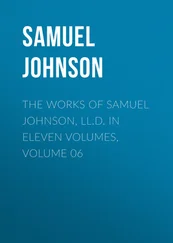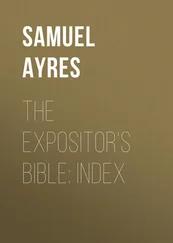Samuel Baird - A Bible History of Baptism
Здесь есть возможность читать онлайн «Samuel Baird - A Bible History of Baptism» — ознакомительный отрывок электронной книги совершенно бесплатно, а после прочтения отрывка купить полную версию. В некоторых случаях можно слушать аудио, скачать через торрент в формате fb2 и присутствует краткое содержание. Жанр: foreign_antique, foreign_prose, на английском языке. Описание произведения, (предисловие) а так же отзывы посетителей доступны на портале библиотеки ЛибКат.
- Название:A Bible History of Baptism
- Автор:
- Жанр:
- Год:неизвестен
- ISBN:нет данных
- Рейтинг книги:5 / 5. Голосов: 1
-
Избранное:Добавить в избранное
- Отзывы:
-
Ваша оценка:
- 100
- 1
- 2
- 3
- 4
- 5
A Bible History of Baptism: краткое содержание, описание и аннотация
Предлагаем к чтению аннотацию, описание, краткое содержание или предисловие (зависит от того, что написал сам автор книги «A Bible History of Baptism»). Если вы не нашли необходимую информацию о книге — напишите в комментариях, мы постараемся отыскать её.
A Bible History of Baptism — читать онлайн ознакомительный отрывок
Ниже представлен текст книги, разбитый по страницам. Система сохранения места последней прочитанной страницы, позволяет с удобством читать онлайн бесплатно книгу «A Bible History of Baptism», без необходимости каждый раз заново искать на чём Вы остановились. Поставьте закладку, и сможете в любой момент перейти на страницу, на которой закончили чтение.
Интервал:
Закладка:
5. This conclusion is fully confirmed upon a critical examination of the connection of Paul’s argument. The “meats and drinks and divers baptisms” he characterizes as “righteousnesses of the flesh,” in confirmation of the assertion just made, that they could not “perfect,” or purify the conscience of the worshiper. He then, immediately, presents in contrast the atonement of Christ. “They,” says he, “depended only on meats and drinks and divers baptisms, righteousnesses of the flesh imposed until the time of reformation. But Christ being come, … neither by the blood of goats and calves, but by his own blood he entered in once into the holy place, having obtained eternal redemption for us. For if the blood of bulls and of goats and the ashes of a heifer sprinkling the unclean, sanctifieth to the purifying of the flesh, how much more shall the blood of Christ … purge your conscience.” Thus, in immediate exposition of his statement as to divers baptisms, the apostle specifies the two most conspicuous forms of the sprinklings of Sinai, that of the whole people, upon the making of the covenant, and that administered with the water of separation – the one being the original of the ordinance, and the other its ordinary and perpetuated form. For, that there may be no mistake as to his reference, in speaking of the blood of bulls and of goats, he proceeds, a little farther on to describe particularly its use in the Sinai baptism: “For when Moses had spoken every precept to all the people according to the law, he took the blood of calves and of goats, with water, and scarlet wool and hyssop, and sprinkled both the book and all the people, saying, This is the blood of the testament (the covenant), which God hath enjoined unto you.” – Vs. 19, 20. As we examine Paul’s argument throughout the chapter, we find his attention directed, from first to last, to the sprinklings of the law alone, while the self-washings are not once named nor alluded to. This, afterwards, very signally appears in that magnificent contrast of Sinai and Sion, in which he sums up the whole argument of the epistle. The crowning feature in the attractions of Sion is “the blood of sprinkling that speaketh better things than that of Abel.” – Heb. xii, 24. In the presence of it the self-washings are not counted worthy to be named.
6. The manner in which, in the next chapter, self-washing is at length introduced is a singular confirmation of the view here taken. So long as the writer is occupied in the argument as to Christ’s work of expiation, he makes no allusion to the self-washings. But when he proceeds to urge upon his readers the practical plea which his argument suggests, he does it by referring to the two rites, in the relation to each other which we have indicated. “Having, therefore, brethren, boldness to enter into the holiest, by the blood of Jesus, … and having a High Priest over the house of God, let us draw near with a true heart, in full assurance of faith, having our hearts sprinkled from an evil conscience, and our own bodies washed with pure water.” – Heb. x, 19-22. To an unclean person, desiring to claim the privileges of the sanctuary, the requirement of the law was, Let him be sprinkled on the third day and on the seventh, to set forth Christ’s and the Spirit’s grace; and then, let him wash himself, in token of the maintaining of personal holiness. From the rites which he has been discussing, Paul’s exhortation takes form, and in them finds interpretation.
The conclusion is evident. Had Paul meant by the phrase in question to designate the self-washings, they were by affusion, and it would follow that that is the mode of baptism. But that his reference was distinctively and emphatically to the sprinkled rites is beyond candid contradiction. We, therefore, plant ourselves upon this impregnable position, and challenge assault. For fifteen hundred years of the church’s history, baptism was uniformly administered by sprinkling. It was so administered down to the time of Christ. It was so administered in the time of Paul. The word does not then mean to dip or to immerse; for, Paul being witness, the rite was not so performed. Had we no further evidence, this should be conclusive.
Part IV.
THE RITUAL SELF-WASHINGS
Section XXV. — Unclean until the Even
The clean, that is those who had been purified by sprinkling, were liable to contract certain minor defilements, which were characterized by continuing until the even. Of these there were two classes. First, were those which resulted from participation in expiatory rites. Among the most conspicuous examples of this class were the uncleanness of the priests and assistants by whom the red heifer was sacrificed, the ashes collected and the water of separation sprinkled on the unclean. These all were, by participation in those rites, rendered unclean until the even, and were required to wash their clothes, and bathe their flesh, in order to their cleansing. (Num. xix, 7, 8, 10, 21.) The meaning of this is evident. The red heifer was a sacrifice of expiation, “a purification for sin.” – Ib. 9. In it, the priests and assistants and he that sprinkled the ashes, with the heifer itself, together, constituted a complex type of the Lord Jesus, offering himself a sacrifice to justice, sprinkling the altar in heaven with his own blood, and applying it with his Spirit to his people for the purifying of their uncleanness. The defilements for which the ashes of the heifer were provided were typical of our native depravity and death in sin and the curse. From these, Christ freed his people, by being himself made a curse for them (Gal. iii, 13), dying in their stead, that they might live. To represent this the priests, assistants, and administrator of the water of separation, became defiled, by participation in the cleansing rites. The same explanation applies to the defilement which the high priest and others incurred by participation in the observances of the day of atonement. (Lev. xvi, 24, 26.)
The curse under which the Lord Jesus came exhausted itself on his natural life, and expired as he rose from the dead. Of the period during which he bore its burden, and fulfilled his atoning work, he himself says: “I must work the works of him that sent me, while it is day ; the night cometh, when no man can work.” – John ix, 4. And on the night of the betrayal he said to the Father, “I have finished the work which thou gavest me to do.” – Ib. xvii, 4. It thus appears that a day is a symbol of the period of man’s natural life, the period during which the Lord Jesus was under the curse. Hence the typical uncleanness of the priests and assistants was limited to the even of the day on which it was incurred. It was removed by self-washing; for it was by his own power and Spirit that Christ threw off the curse and rose from the dead. (Rom. viii, 2, 11; John x, 17, 18.)
2. The other class of uncleannesses until the even arose from the more or less intimate contact of the clean with persons or things that were unclean in the higher degree; or from other causes essentially similar in meaning. Defilements resulting from expiatory rites symbolized the putative guilt incurred by the Lord Jesus, in making atonement for us; while he ever remained, in himself, “holy, harmless, undefiled, separate from sinners.” – Heb. vii, 26. But the forms of uncleanness now under examination resulted from contact with things that were typical of the debasement, corruption, and depravity of the world. The uncleanness hence arising signified the spiritual defilement to which God’s people are liable from contact with evil. Hence, the grades of defilement, consequent upon the closeness and fellowship of the contact, and the nature of the uncleanness with which it took place. These were designed to teach the lesson with which James crowns his definition of pure religion and undefiled. “To keep himself unspotted from the world.” – James i, 27. The same idea is presented by the beloved John. “We know that whosoever is born of God sinneth not; but he that is begotten of God keepeth himself , and that wicked one” (that “unclean spirit,” the representative and source of all moral evil) “toucheth him not” (to defile him, as would the touch of the leper or the unclean). “And we know that we are of God, and the whole world lieth in wickedness.” Literally, – “lieth in that wicked one,” – in his bosom, and the defilement of his contact and communion. (1 John v, 18, 19.) And, again, “Beloved, now are we the sons of God, and it doth not yet appear what we shall be; but we know that when he shall appear, we shall be like him; for we shall see him as he is. And every man that hath this hope in him purifieth himself, even as he is pure.” – 1 John iii, 2, 3.
Читать дальшеИнтервал:
Закладка:
Похожие книги на «A Bible History of Baptism»
Представляем Вашему вниманию похожие книги на «A Bible History of Baptism» списком для выбора. Мы отобрали схожую по названию и смыслу литературу в надежде предоставить читателям больше вариантов отыскать новые, интересные, ещё непрочитанные произведения.
Обсуждение, отзывы о книге «A Bible History of Baptism» и просто собственные мнения читателей. Оставьте ваши комментарии, напишите, что Вы думаете о произведении, его смысле или главных героях. Укажите что конкретно понравилось, а что нет, и почему Вы так считаете.












